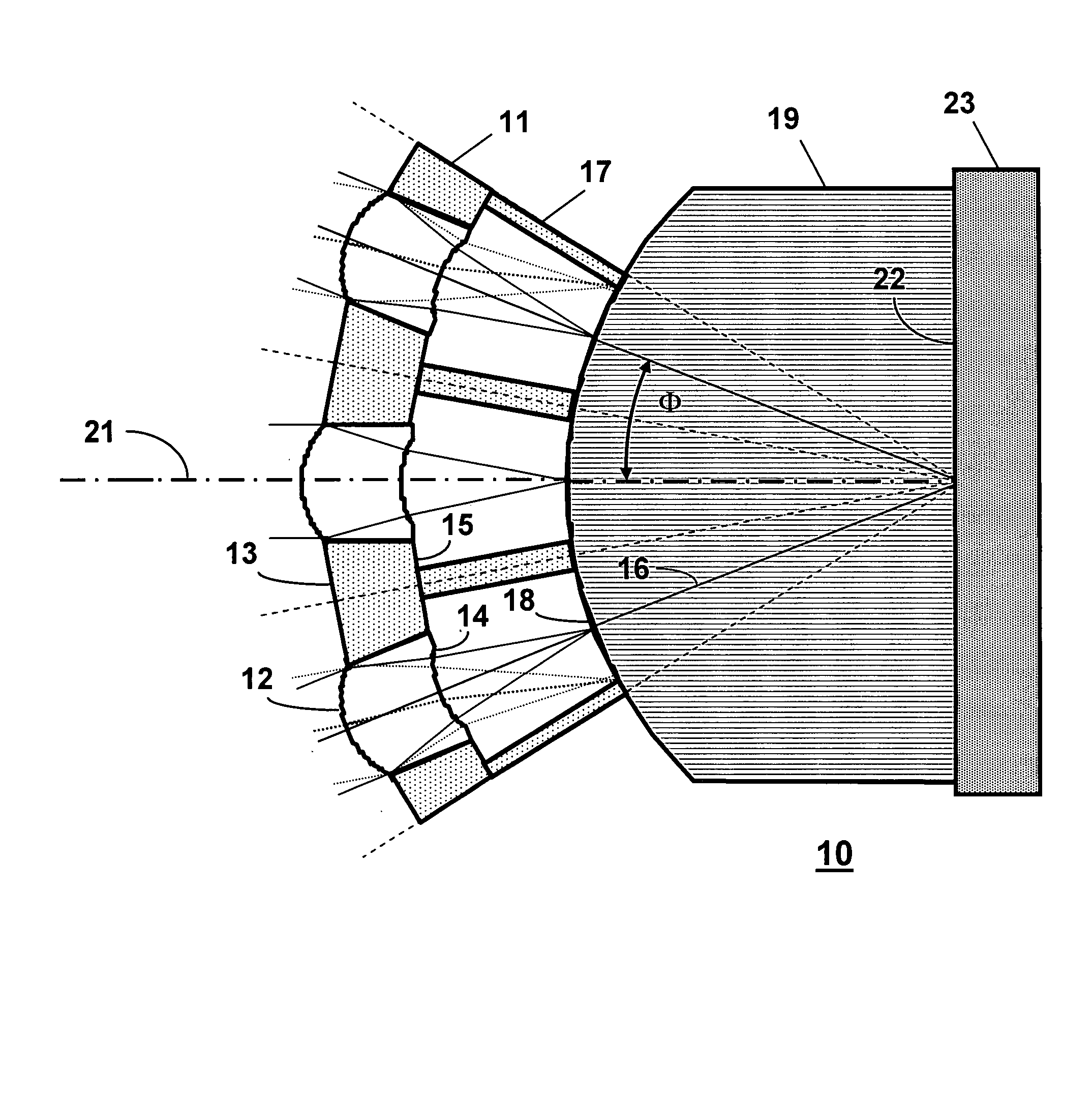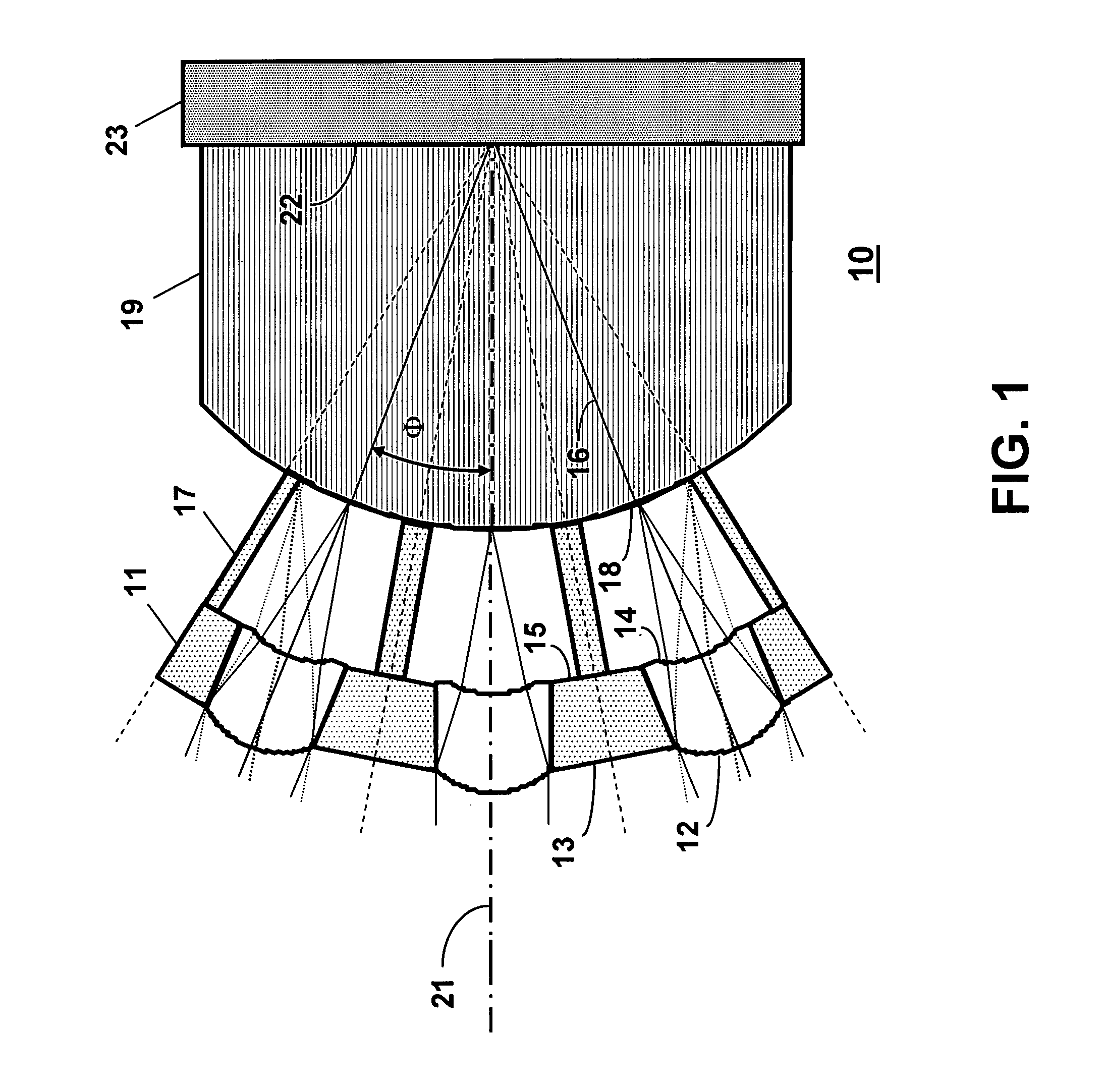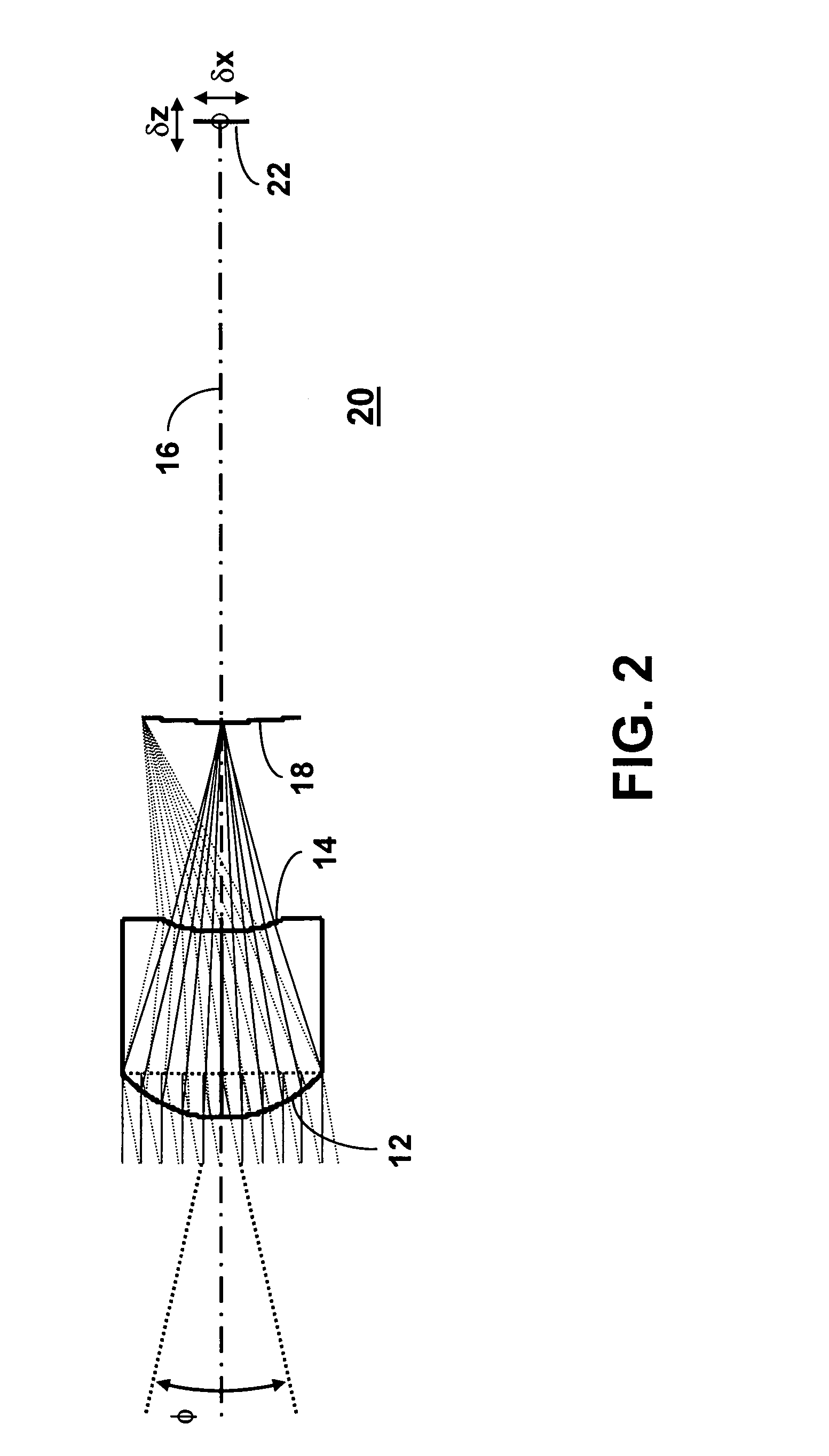Microoptical compound lens
a compound lens and microoptic technology, applied in the field of microoptics, can solve the problems of reducing the resolution and image quality of microoptical lenses, diffraction-limited performance to be achieved, and optic limitations due to geometric aberrations to be overcome, so as to improve the overall fov, improve the numerical aperture, and improve the effect of image quality
- Summary
- Abstract
- Description
- Claims
- Application Information
AI Technical Summary
Benefits of technology
Problems solved by technology
Method used
Image
Examples
Embodiment Construction
[0016]In FIG. 1 is shown an example of an apposition microoptical compound lens 10 having a plurality of artificial ommatidia for imaging light from an object. The lens 10 comprises a segment of a hollow, three-dimensional optical shell 11 with an array of lenslets formed on the inner and / or outer surfaces of the shell. Outer lenslets 12 on the outer shell surface 13 collect light from the object. The outer lenslets 12 can be precisely aligned on an ommatidial axis 16 with corresponding inner lenslets 14 on the inner shell surface 15. Each lenslet pair 12 and 14 is aligned on a separate ommatidial optical axis 16. The angle between the optical axes of two adjacent lenslet pairs is known as the interommatidial angle Φ. The optical rays from each lenslet pair 12 and 14 are focused and create a sub-image on the curved front surface 18 of a coherent fiber bundle 19. The curved front surface 18 of the coherent fiber bundle 19 is concentric with the hollow optical shell 11. A curved space...
PUM
 Login to View More
Login to View More Abstract
Description
Claims
Application Information
 Login to View More
Login to View More - R&D
- Intellectual Property
- Life Sciences
- Materials
- Tech Scout
- Unparalleled Data Quality
- Higher Quality Content
- 60% Fewer Hallucinations
Browse by: Latest US Patents, China's latest patents, Technical Efficacy Thesaurus, Application Domain, Technology Topic, Popular Technical Reports.
© 2025 PatSnap. All rights reserved.Legal|Privacy policy|Modern Slavery Act Transparency Statement|Sitemap|About US| Contact US: help@patsnap.com



